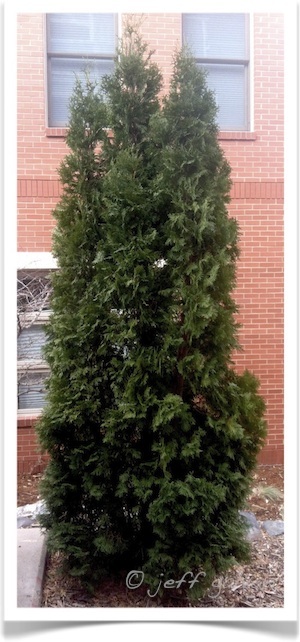Botanical name: Thuja occidentalis
Family: cupressaceae (cypress)
AKA eastern arborvitae, eastern white cedar, false white cedar, white cedar, northern white cedar, swamp cedar,
- Native to the northeastern parts of North America
- Evergreen
- Crown small to medium tree, upright pyramidal to narrow conical in shape often creating multiple trunks
- Height 30-45′
- Spread 7-14′ in width
- Growth Rate slow
- Coniferous
- Life span – While these trees can live for over 1,600 years in most urban environments it
- sprays of scale-like leaves that are dark green.
- Fruit is small, slender cones with scales that overlap
- Often used as a privacy screen
- It is well documented that native American tribes used this plant medicinally
- It is edible and can be used in tea
- Prefers full sun and tolerates partial sun, although it may not fully fill out
- prefers moist soil
- Common problems include: prone to damage caused by ice and snow accumulation and leaves freezing (in extemely cold climate areas), bagworm, mildews, tip blight (fungus Pestalotiopsis funerea), spider mites, aphids, canker, molds, sun scorch.
- pH adaptable to both alkaline 7.0 and acidic soils 5.1
- Plant hardiness zones 3 -8

